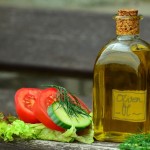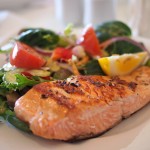 Have you changed your oil lately? Not for your car, but to keep your body running smoothly. The newly released 2015 – 2020 Dietary Guidelines, provide recommendations for the amount of fat we consume. Fat-free or low-fat dairy products, lean meats, poultry, and seafood can reduce the amount of fat in our diets. The key recommendations state that less than ten percent (10%) of calories per day should be consumed from saturated fats.
Have you changed your oil lately? Not for your car, but to keep your body running smoothly. The newly released 2015 – 2020 Dietary Guidelines, provide recommendations for the amount of fat we consume. Fat-free or low-fat dairy products, lean meats, poultry, and seafood can reduce the amount of fat in our diets. The key recommendations state that less than ten percent (10%) of calories per day should be consumed from saturated fats.
Why should we be concerned about the amount of fat in our diet? Some fats can increase cholesterol and the risk of heart disease and stroke. Fats produce nine calories per gram of fat versus only four calories per gram of carbohydrates and proteins. Read the nutrition fact label and the ingredient list on food labels to discover where the fat is in your food.
The basic types of fats are:
- Saturated fats – mostly from animal sources and foods made from these foods. Some plant-based foods such as coconut oils and palm kernel oil contain saturated fats.
- Trans fat – found in mass produced baked goods and commercially fried foods. They can affect your cholesterol levels – raise the bad low-density lipoprotein (LDL) and lower the good high-density lipoprotein (HDL).
- Monounsaturated fats – sources include olive, canola, peanut, safflower and sesame oils plus avocado, and some nuts.
- Polyunsaturated fats – soybean, corn, sunflower oils, fatty fish (salmon, mackerel, herring) some nuts, seeds, and tofu. The American Heart Association (AHA) recommends that the majority of fats consumed should be mono- and polyunsaturated fats.
- Omega-3 fats – sources include mackerel, salmon, herring, and albacore tuna. These fats can help prevent the clogging of arteries.

Check out The American Heart Association (AHA) and the American Diabetes Association websites which provide facts about the various sources of these fats and how you can protect your heart.
Take a look at the foods you consume and decide if it is time for an oil change.
